Planning to visit Yildiz Palace in Istanbul? As one of the most underrated Istanbul attractions, it’s still very much a hidden gem. This guide tells you everything you need to know!
Yıldız Palace is often overlooked by visitors in favor of more famous Ottoman palaces in Istanbul like Topkapı or Dolmabahçe — but this attraction is just as interesting and full of intrigue!
In fact, Yildiz Palace was the final royal residence of the Ottoman Empire where the controversial Sultan Abdülhamid II ruled behind closed doors (and watched his empire slowly crumble, but that’s another story).
Besides being historic, the palace is absolutely gorgeous and well-worth a visit thanks to its elegant pavilions, lush gardens, East-meets-West architecture, and unique extras that you might not expect (like an on-site theater and woodworking studio).
Best of all, Yildiz Palace is still very much off the tourist radar, which means fewer crowds and plenty of space to explore at your own pace.
In this guide, we’ll cover everything you need to know, including the history of the palace, things to see at Yildiz Palace, helpful travel tips, how to book tickets, what to expect when visiting Yildiz Palace, and much more.
Note: Yildiz Palace was formerly referred to as the “Yildiz Palace Museum,” but today, most people simply call it Yildiz Palace (Yıldız Sarayı in Turkish).
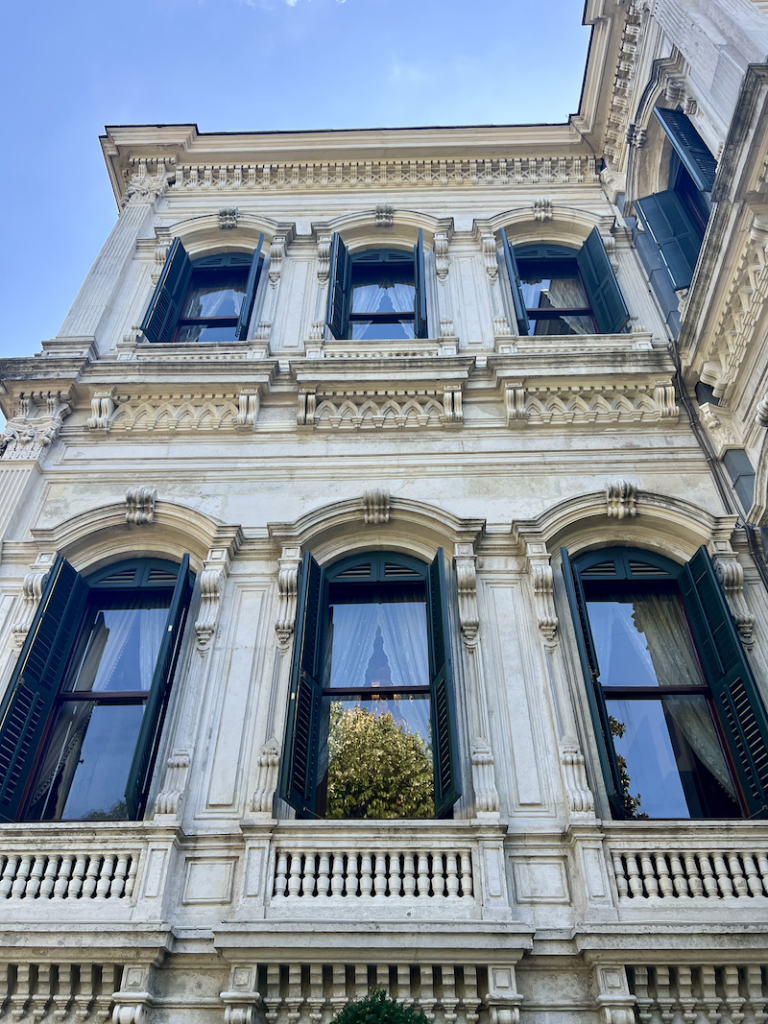
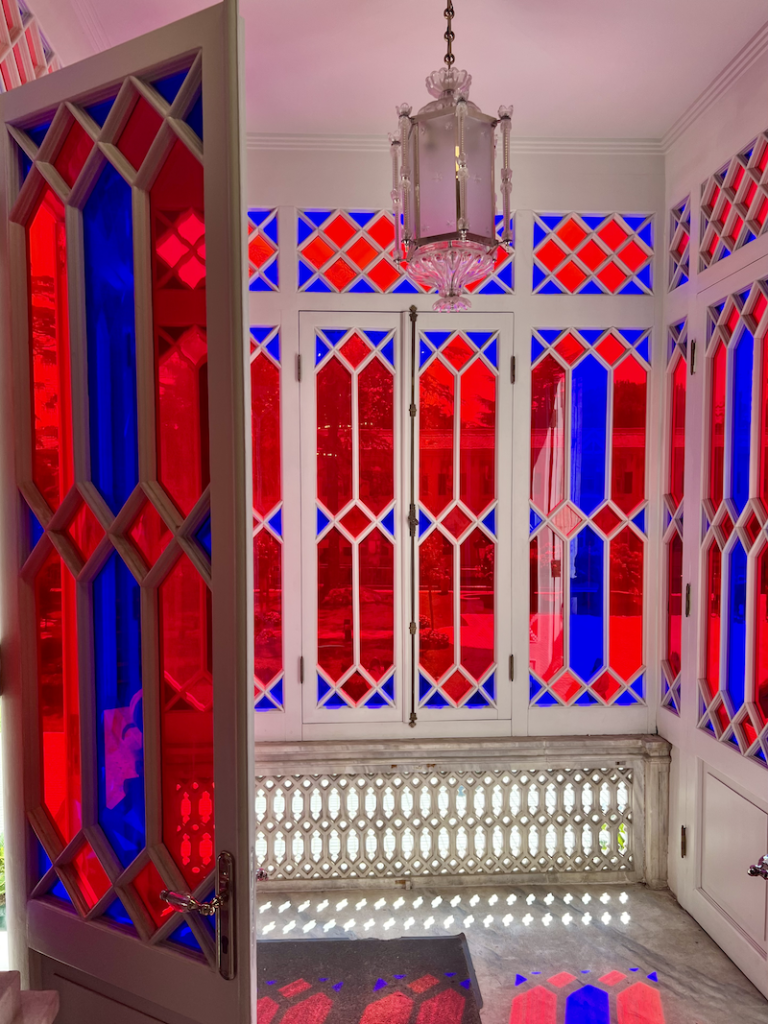
Yildiz Palace: Basic Information
📍 Yildiz Palace Opening Hours: Yildiz Palace is open from Thursday to Tuesday, 9:00 AM to 5:00 PM. However, we recommend that you check the official website before planning your visit, as the Yildiz Palace working hours can shift seasonally or during holidays!
📍 Yildiz Palace Closed Days: Interestingly, Yildiz Palace is closed on Wednesdays (compared to Topkapi Palace, which is closed on Tuesday, or Dolmabahce Palace, which is closed on Monday).
📍 Holidays & Other Closures: When planning a visit to Yildiz Palace, be sure to keep national holidays in mind. We say that because Yildiz Palace is closed on practically every public holiday, including New Year’s Day, all three first days of Eid al-Fitr, Feast of Sacrifice (Eid al-Adha), and many others. You can check the full list of national holidays in Turkey in our blog post here. →
📍 Yildiz Palace Free Days: There are currently no free admission days at Yıldız Palace.
📍 Dress Code: There isn’t a strict dress code for Yildiz Palace (i.e. no need to cover your head or knees). However, since Yildiz is a palace and a museum, we recommend wearing modest clothing out of respect.
If you plan to see the inside of Yıldız Hamidiye Mosque (located just outside of the palace), we recommend dressing modestly and carrying a headscarf. We also recommend comfortable walking shoes, as there is a lot to explore!
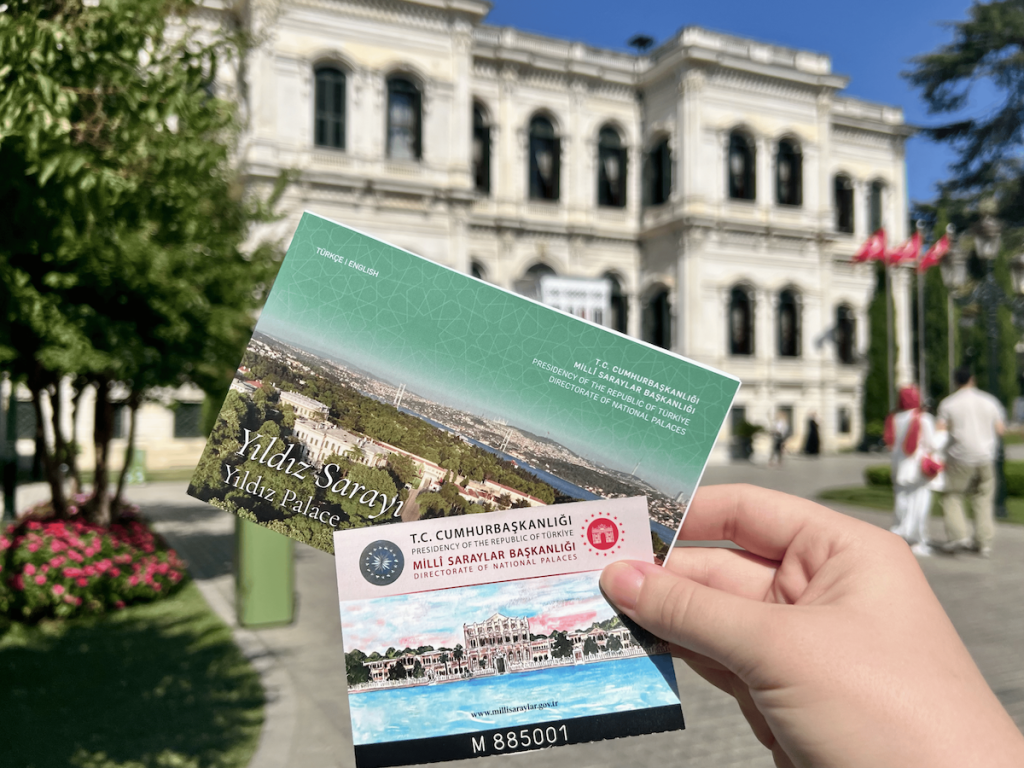
Yildiz Palace Tickets
As of July 2025, the ticket price for Yildiz Palace is 850 Turkish Lira per person.
Your ticket includes entry to all of the attractions inside the palace complex, including the beautifully restored buildings, gardens, pavilions, and more.
❗️Please note that prices are subject to change (ahem, thanks to inflation), so we always recommend checking the official website or the signboard at the palace entrance for the latest information.
Travel Tip: Buy Yildiz Palace Tickets Online
If you’re planning your Istanbul itinerary, we highly recommend buying your Yildiz Palace ticket online (click here to book!)
These tickets are sold by the official ticket partner and include fast-track entry, so you can skip the lines as soon as you arrive.
The online ticket includes everything the on-site ticket covers, and oftentimes, it’s a little cheaper to book online than at the ticket office! (I know, we were surprised too!)
Best of all, you can reserve now and pay later, and since it’s through GetYourGuide, there’s free cancellation too (cancel up to 24 hours in advance for a full refund). It’s the easiest way to guarantee your entry and avoid sold-out time slots at the entrance.
Click here to book your tickets or use the widget below to check availability and reserve:
Yildiz Palace Travel Tips
🕢 How much time do I need to see Yildiz Palace? — We recommend budgeting between 2 to 3 hours to comfortably see Yildiz Palace (depending on how fast you walk, which buildings you visit, and if you plan to take a break at the cafe).
For reference, we spent nearly two hours the last time we visited Yildiz Palace, which included taking the photos you see in this blog post (😊), reading the placards, and enjoying a little break at the cafe.
📆 The best time to visit Yildiz Palace is on a weekday, and preferably early morning. The least-busy days at Yildiz Palace are usually Monday, Tuesday, and Thursday (remember, the palace is closed on Wednesdays! 😉)
In terms of seasons, summer has the longest queues and large tour groups (especially around mid-day), but that’s typical if you plan to visit Turkey in the summer.
Although, we’d like to note that the queues at Yildiz Palace are nowhere near as long as those at Topkapi or Dolmabahce Palace — especially since Yildiz isn’t “discovered” yet by the tourists.
📸 Security Checks & Photography Rules: As with many other tourist attractions in Istanbul, there is an X-ray machine and a metal detector that you’ll have to step through near the entrance to the palace.
Likewise, there is no photography allowed inside the main buildings at Yildiz Palace (outside is ok). If you’re wondering how we got all of these photos in the blog post, it’s because we went during the palace’s grand opening, when the rules were a lot more relaxed. 😁
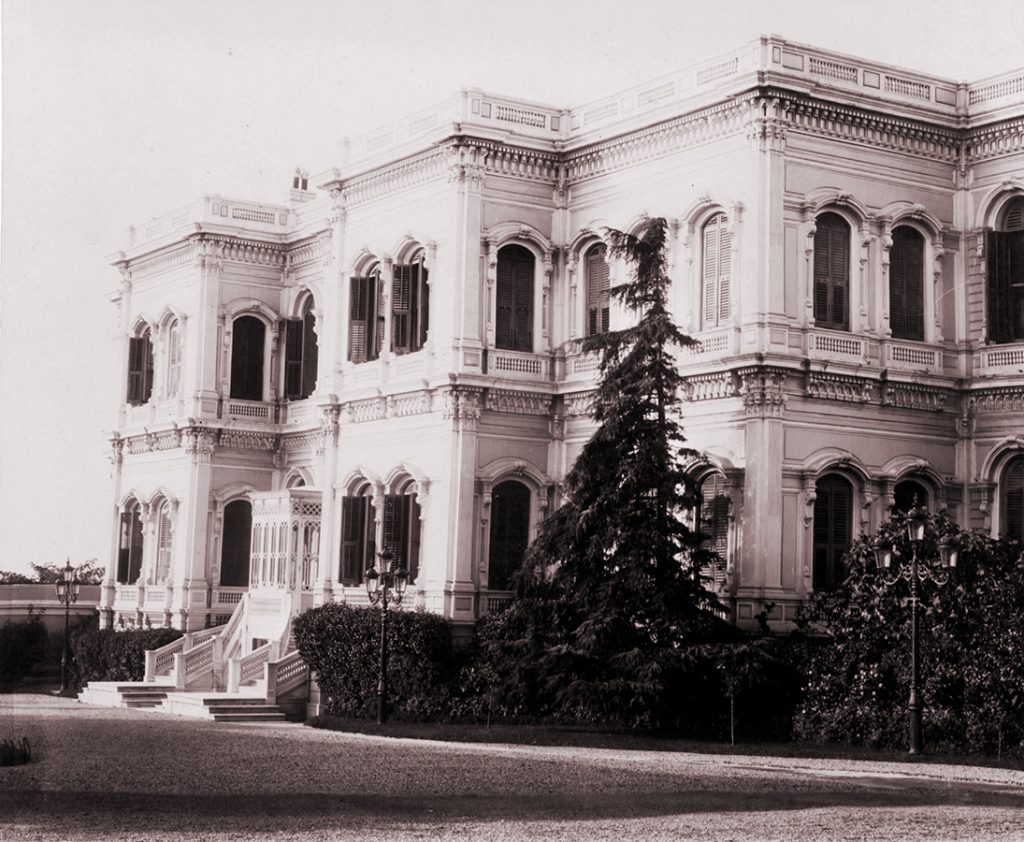
A Short History of Yildiz Palace
Sprawling across 500,000 square meters (over 5.3 million square feet), Yıldız Palace sits on a wooded hillside in Beşiktaş, offering sweeping views of both the Bosphorus and the Marmara Sea. Interestingly, Yildiz means star in Turkish, but nobody really knows why it’s called that. 😅
While it may not be as immediately recognizable as Topkapı or Dolmabahçe, its story is packed with drama, secrecy, and the final days of an empire. Let’s take a look…
Around the 1880s, Sultan Abdülhamid II, just two years into his rule, was becoming very paranoid about living in Dolmabahçe Palace, which had served as the imperial residence since the mid-19th century. Though beautiful, Dolmabahçe sat right on the Bosphorus — making it an easy target for a naval attack. Fearing assassination or invasion, Abdülhamid began searching for a safer and more secluded place to govern from.
During his search, he discovered an old pavilion in Beşiktaş. The Yıldız Palace was originally built in the late 1700s by Sultan Selim III for his mother so that she could use it as a peaceful retreat surrounded by gardens and lush hills. However, after her death, the pavilion was abandoned and fell into obscurity.
Satisfied with Yildiz Palace’s ideal location (after all, it was hidden among the trees and offered security and seclusion), Sultan Abdülhamid II relocated to Yildiz Palace and greatly expanded it. Under his rule, the palace evolved into a sprawling complex that felt more like a miniature city hidden in the woods.
At its peak, the complex included imperial residences, administrative buildings, a mosque, a theater (where the sultan and his guests could watch European operas), a huge garden, a porcelain factory, barracks, stables, and even a carpenter’s studio (where Abdülhamid II practiced his hobby). Also, a total of 12 thousand people (yes, 12,000!) lived at the palace during Abdülhamid II’s time.
Despite his paranoia, Abdülhamid II ruled for over 30 years, overseeing a period of immense modernization, censorship, and political intrigue — much of it orchestrated from within Yıldız’s walls.
In fact, Abdülhamid II moved the entire political administration to Yildiz Palace, and it became notoriously known as a center of political repression and control. Things were so tense that, for a time, the use of the word “yıldız” in the Ottoman press was prohibited by Abdülhamid II’s censorship because it might have political connotations.
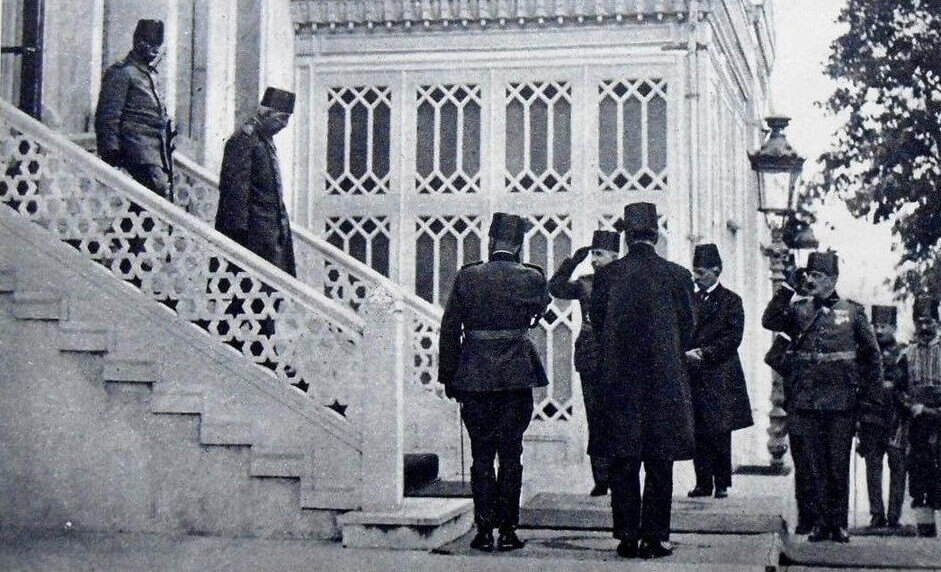
After the abolition of the Ottoman sultanate in 1922, the palace fell into decline. The estate was repurposed during the early Republic period for military and governmental use, but most of it remained off limits for more than a century (yes, 100 years!)
However, after a six-year restoration, it finally opened its doors in 2024. 🙂
Yildiz Palace went down in history as the last administrative center of the Ottoman Empire, and ultimately, the last residence of the sultan. It was here, behind its wooded walls, that the empire’s last sultan watched as centuries of imperial rule gave way to a republic, and six hundred years of Ottoman dominion came to an end.
What to See in Yildiz Palace
Alright, time for the fun part: (virtually) visiting Yildiz Palace!
Like many other sultan residences before it (i.e. Topkapi Palace and Dolmabahce Palace), Yıldız Palace is divided into three main sections:
📍 The government offices
📍 The private residence (where the sultan and his family lived)
📍 The outer garden (today known as Yildiz Park)
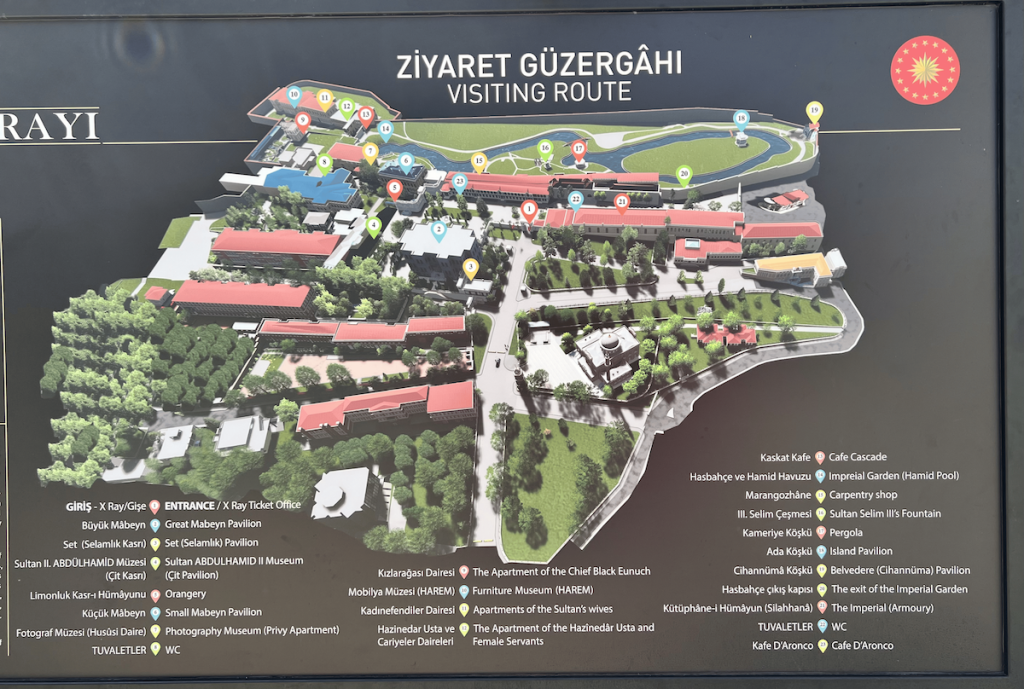
The first section that you’ll come across is the main palace, where the administrative and official state affairs were handled. The buildings here include the Selamlık (Set Pavilion), which are surrounded by the Armory, Yaveran Chambers (where the aides-de-camp worked), Çit Pavilion, Pharmacy, and Library.
The second section is the private area, which was reserved for only the Sultan and his family. The most important buildings here include the Small Mabeyn Pavillion and the Harem buildings, which were a complex of apartments that were home to the sultan’s wives, children, female servants, and chief eunuch.
Enclosing this private area is a lush garden called the Hasbahçe (Privy garden), which includes the Hamid Pool, Cihannuma Kiosk, Island Kiosk (Ada Köșkü) and the Yildiz Palace Theater.
The third (and final) area is the outer garden, which is home to multiple pavilions, including the Chalet Kiosk (Şale Köșkü), the Malta Kiosk (Malta Köșkü), the Çadır Kiosk (Çadır Köșkü), and the Yıldız Porcelain Factory.
Actually, we’ll let you in on a little secret since you read this far 😉 This third area is free to visit, since it’s part of Yildiz Park and not Yildiz Palace. The two are managed separately, with the park open to the public and no ticket required. However, we still recommend visiting Yildiz Palace because that’s where all the real gems are. Grand halls, private chambers, secret staircases, ah… so many fascinating things! 😌
🎫 Ready to visit? Click here to book your Yıldız Palace tickets in advance and skip the line! →
Let’s take a closer look at each section:
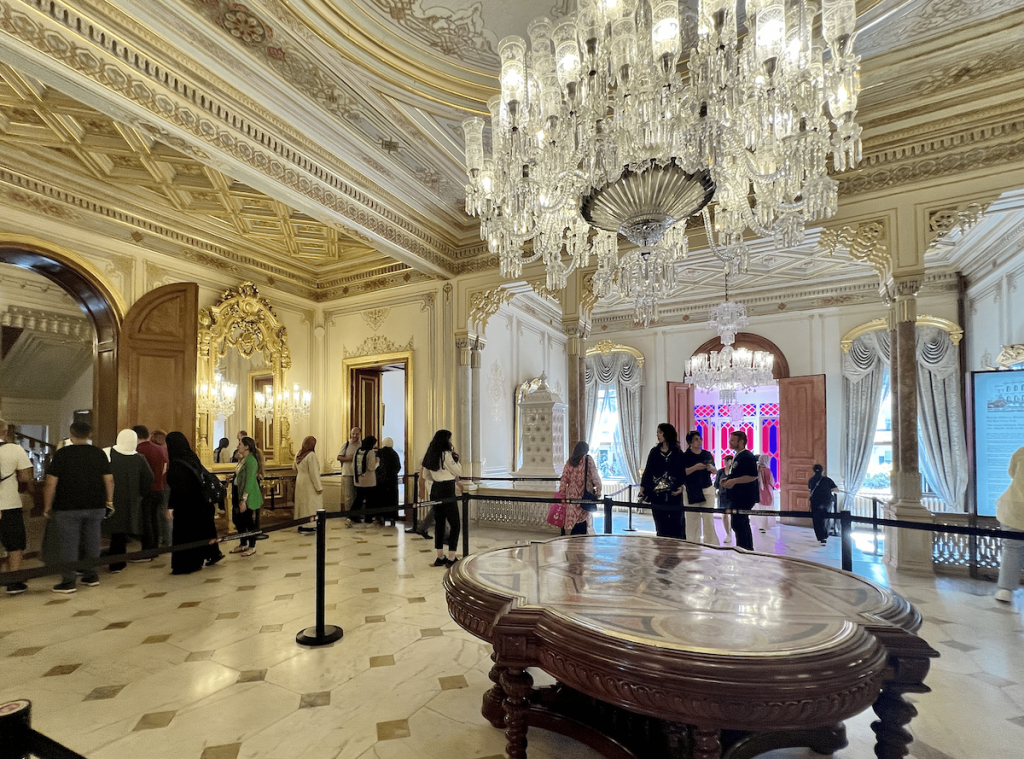
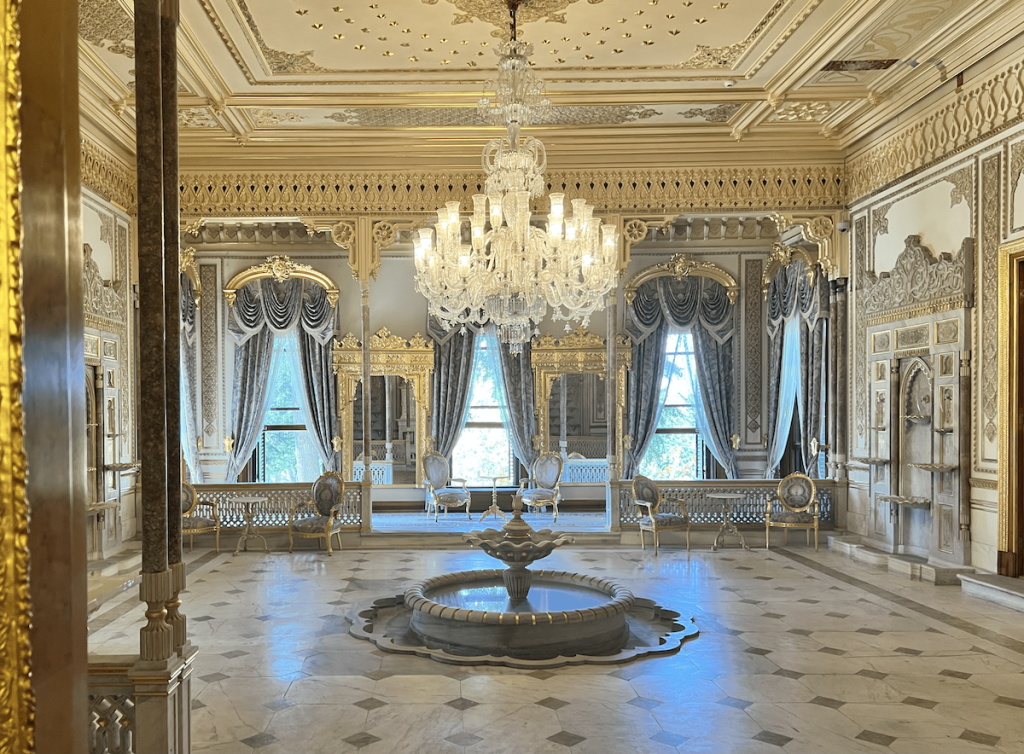
The First Section: The Administrative Heart of Yildiz Palace
As soon as you officially enter Yildiz Palace, you’ll find yourself in the first section, where the empire’s day-to-day operations were orchestrated.
This is where the sultan met with officials, handled state matters, and quietly ran the empire far from the public eye. Unlike the opulence of Dolmabahçe’s waterfront halls, Yıldız’s administrative wing is more discreet and fortified. In fact, this isn’t a coincidence, as it reflected Sultan Abdülhamid II’s preference for privacy and control.
At the start of this area is the Selamlık, or formally known as the Set Pavilion. This was essentially the empire’s “reception hall” during the late 19th century. High-ranking officials, foreign envoys, and carefully vetted guests would be received here before being granted further access to the palace grounds.
Surrounding the Selamlık are a cluster of specialized buildings that supported the daily functions of the state.
These include the Yaveran Chambers, where the sultan’s aides-de-camp worked; the Armory, which stored weapons and security equipment; and the Çit Pavilion, thought to be used for semi-private meetings.
However, the most important (and biggest) building is the beautiful Great Mabeyn Pavilion, which function as the sultan’s central government office. It represented the state at the highest level, a sort of “business card” of the empire if you will.
Foreign dignitaries were received here with full ceremony, and lavish banquets were hosted within its ornate halls. Among the notable rulers who walked through its doors were U.S. president Ulysses S. Grant, German Emperor Wilhelm II, Prince Akihito of Japan, and Shah Muzafferuddin of Iran.
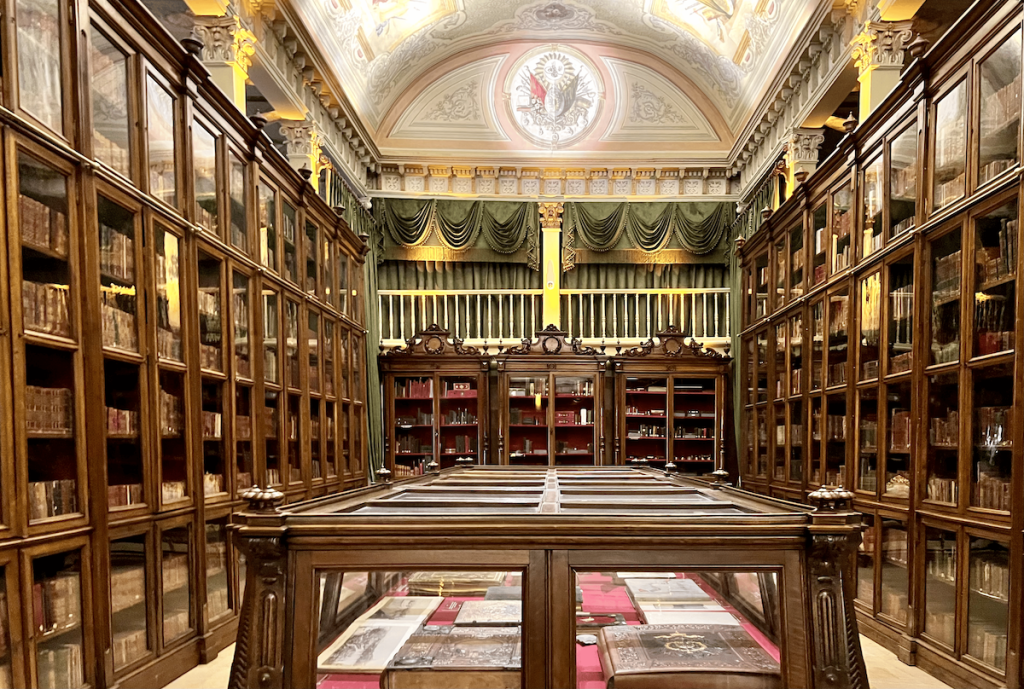
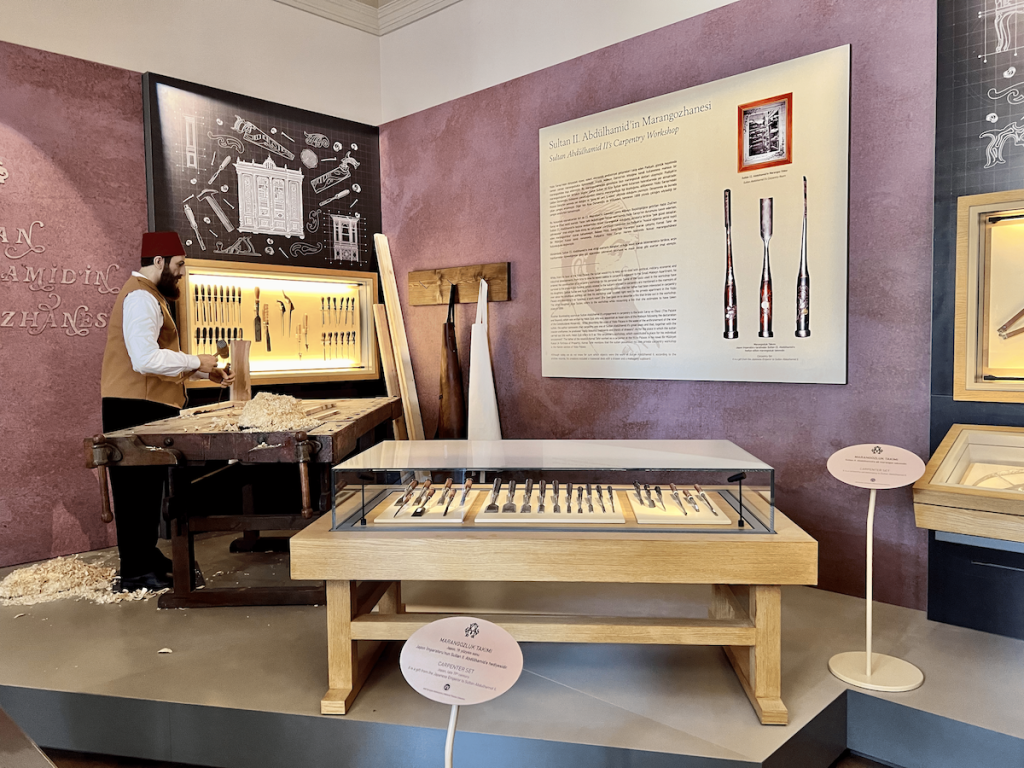
There’s also a Pharmacy and a Palace Library, which housed scientific and religious texts that Abdülhamid personally curated. He was known to be well-read and deeply interested in modern science and technology, and it really showed — when we visited, we were shocked at the sheer size and length of the library!
One of the most interesting spaces in this section is the Carpenter’s Workshop (facing the gardens). Unlike other rulers, Sultan Abdülhamid II had a unique hobby: woodworking!
He was an accomplished carpenter and spent many hours in this studio building tables, chairs, and intricate inlays with his own hands — and some of his handmade pieces are on display in the palace!
Even though this part of the palace was designed for function over design, there’s still a certain grandeur to it.
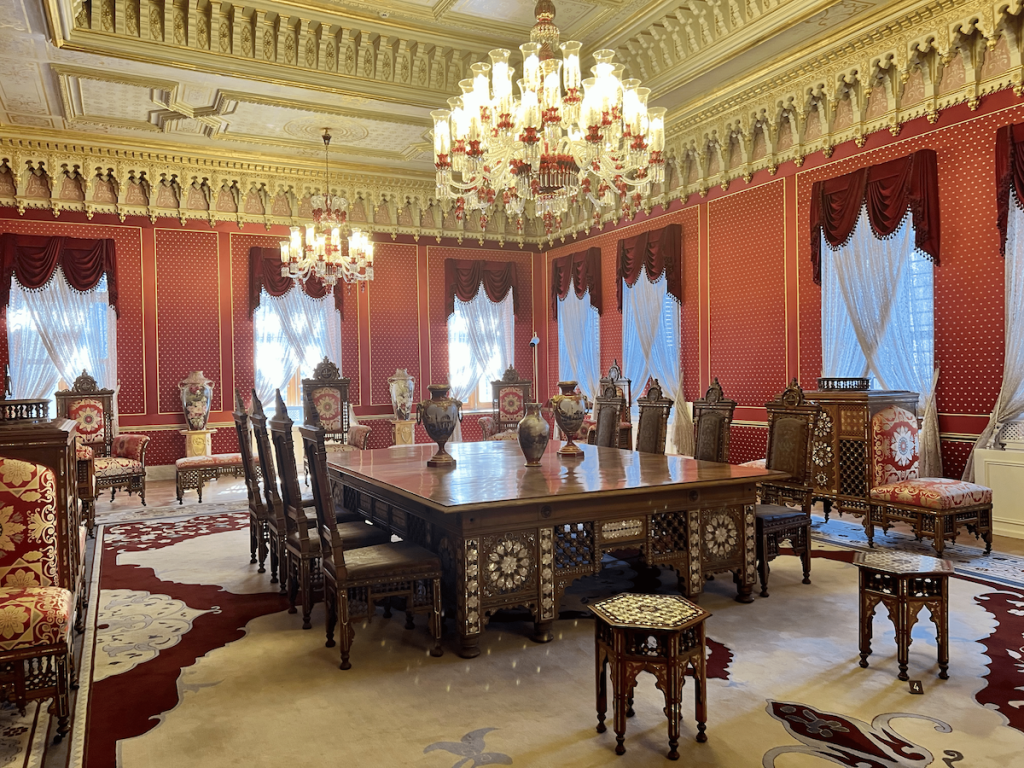
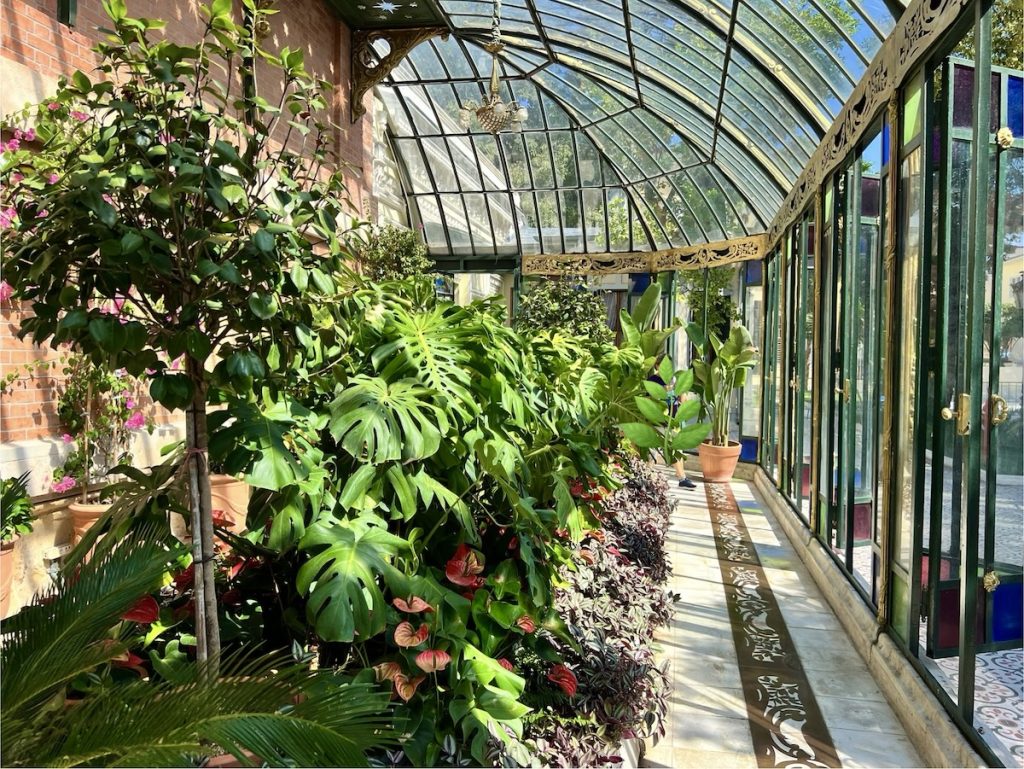
The Second Section: The Sultan’s Private Life
Tucked behind the administrative buildings is where you’ll find the most intimate part of Yildiz Palace: the private quarters of the sultan and his family.
This area was designed for everyday living, rest, and family life. While it’s smaller and more understated than the grand harem at Topkapı Palace, it still offers an interesting look into the personal life of the imperial family.
The centerpiece here is the Small Mabeyn Pavilion, which served as the sultan’s personal study and reception area. Unlike the grand halls of the Selamlık (in the first section), this space was more relaxed and personal. A place where you might find the sultan reading, writing, or meeting with close confidants away from the pressures of public duty.
Fun fact: Sultan Abdülhamid II’s daughters were educated within the harem by European governesses and Ottoman tutors, many of them fluent in French, music, and calligraphy. Despite the palace’s isolation, the royal family remained closely tied to the cultural and intellectual trends of that time.
Connected to this are the harem apartments, a series of residential buildings where the sultan’s wives, children, female servants, and eunuchs resided. While still grand by ordinary standards, these apartments were designed with privacy and practicality in mind.
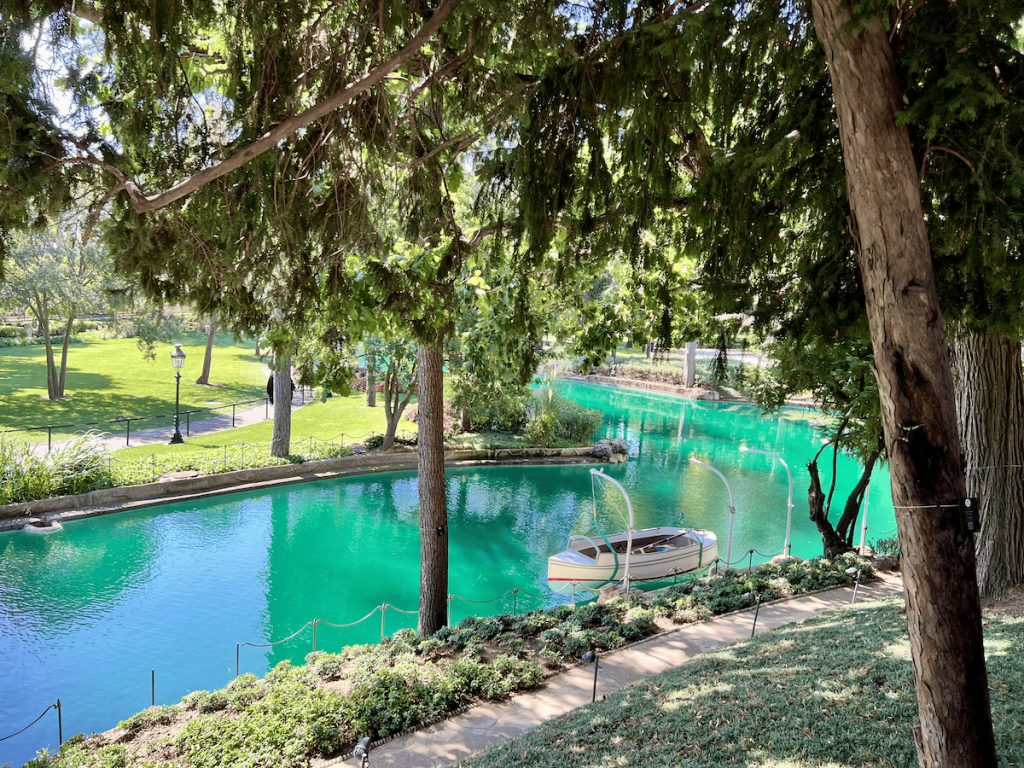
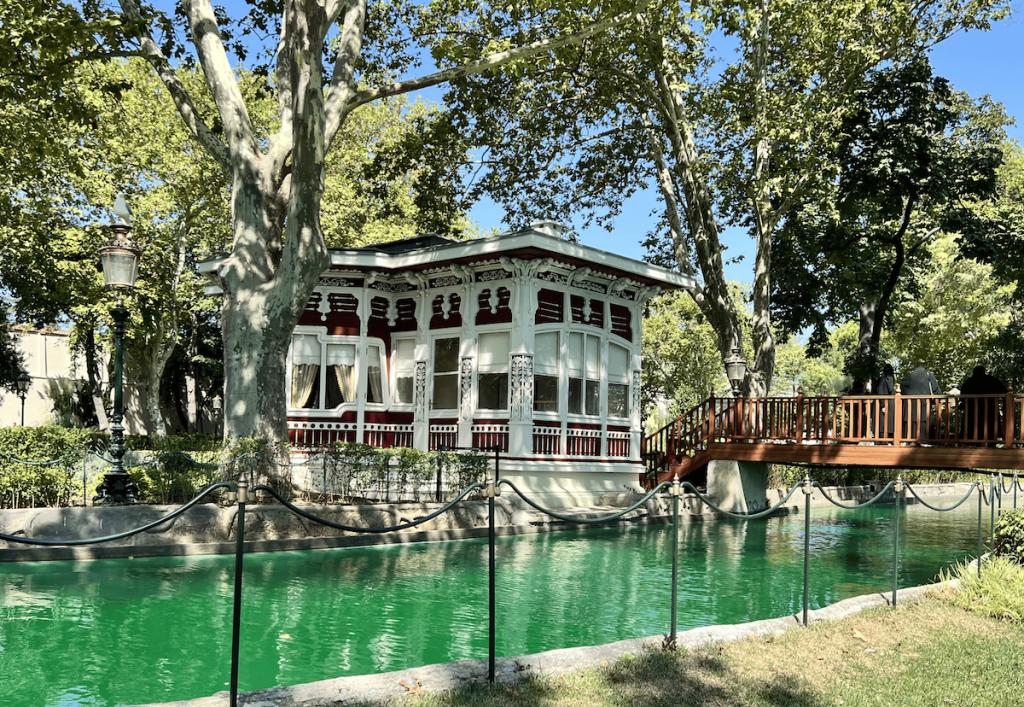
Framing this private world was an encircling garden called the Hasbahçe (which translates to private garden).
Inside the garden, you’ll find beautiful structures like the 300 meter-long Hamid Pool (named after Abdülhamid II himself), the Island Pavilion (which offered a lovely escape amongst the garden), and the Kameriye Köşkü (pergola).
Fun fact: There was even a small zoo in the imperial garden that had zebras, cows, goats, sheep, ducks, turkeys, swans, and parrots.
From the Cihannüma Pavilion, located on the far side of the garden, the sultan could gaze across the Bosphorus and Marmara — the name literally translates to belvedere or turret pavilion.
Finally, one of the most interesting buildings in this section is the Yildiz Palace Theater, a true rarity in any Ottoman palace. Built at the sultan’s request, it hosted operas and plays performed by European troupes for a carefully selected audience (including foreign dignitaries and diplomats). Abdülhamid II, despite his strict censorship of the press, had a deep appreciation for the performing arts.
Fun fact: After the fall of the Ottoman empire, Yildiz Palace didn’t sit empty — it was used as a luxury casino and later converted to a guest house for visiting foreign ministers and royalty!
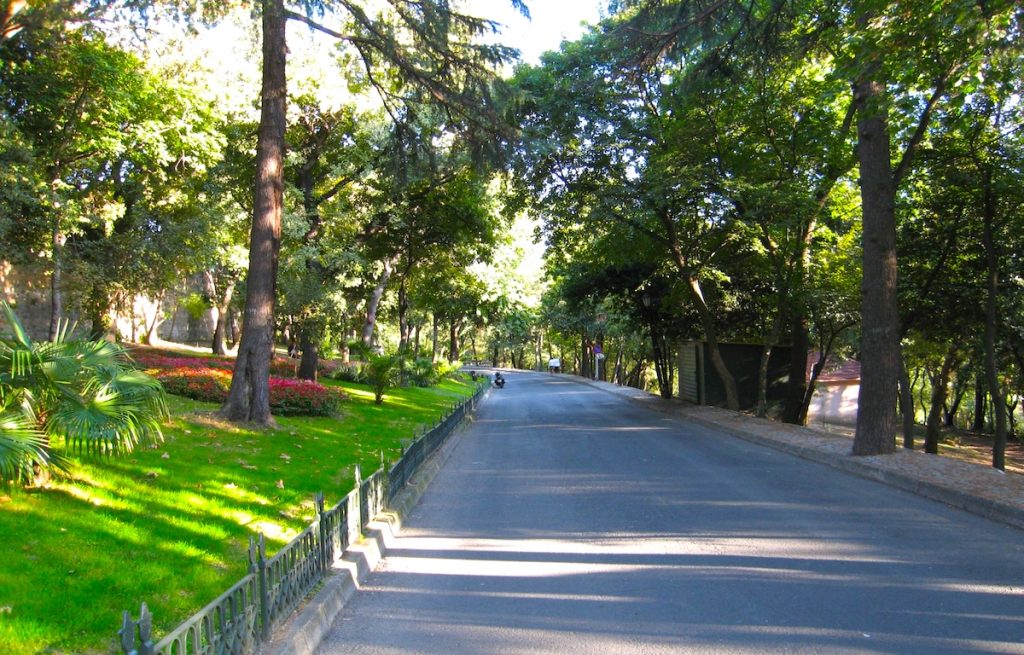
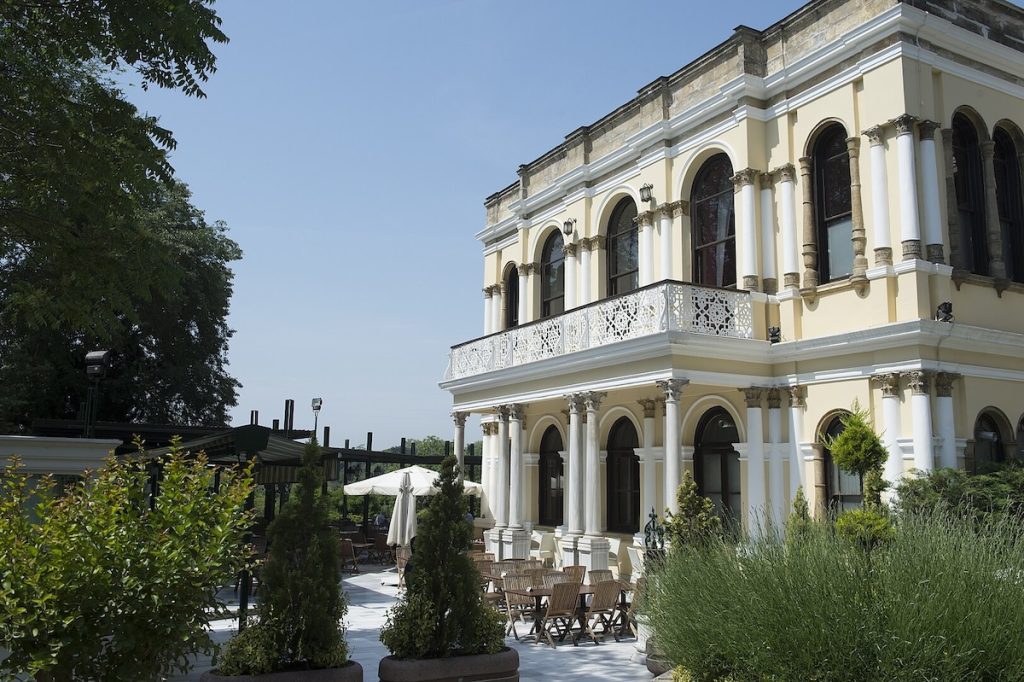
The Third Section: Yildiz Park & Royal Pavilions
The third and final area are the outer gardens. What was once known as the Yildiz Palace gardens during the Ottoman empire is now Yıldız Park, one of the largest and most peaceful green spaces in central Istanbul. This area is separate from Yildiz Palace and free to visit!
Back in the 19th century, these wooded hills were part of a royal hunting ground and landscaped garden where sultans would stroll, ride horses, and entertain guests in the fresh air, surrounded by exotic trees, fountains, and carefully planted flower beds.
Fun fact: These gardens were once connected to Çırağan Palace (another Ottoman palace on the Bosphorus) by a beautiful bridge. Although most of the bridge was damaged and buried underground, you can still see a little chunk here.
Among many Ottoman pavilions and buildings originally found in this area, only the Çadır, Malta, and Chalet pavilions remain today. These small but beautiful buildings once served as royal retreats, diplomatic salons, or garden residences.
The most famous of these is the Şale Köşkü, which translates to Chalet Pavilion. As you might imagine from the name, this luxurious wooden mansion was inspired by German and Swiss architecture. It was expanded multiple times by Sultan Abdülhamid II to impress foreign guests, including Kaiser Wilhelm II of Germany, who visited three times.
Inside the chalet, you’ll find gold detailing, hand-painted ceilings, mother-of-pearl inlay, and the legendary Hereke carpets (which could take years to complete!). This is considered one of the most elegant interiors in all of Istanbul and well worth a visit.
A short walk through the trees brings you to the grandiose Malta Köşkü, named after the island of Malta but built back in the 1870s. Today it functions as a municipal cafe with outdoor seating, where you can sip tea or Turkish coffee surrounded by flowers and birds.
Finally, the Çadır Köşkü, or Tent Pavilion, another beautifully restored structure now serving as a tea garden. It was once used as a resting place for guests strolling through the imperial gardens.
❗Note: Many of these pavilions (köşkü) now function as cafés, but they’re sometimes temporarily closed for renovations or private events. It’s best to double-check opening hours ahead of time before visiting.
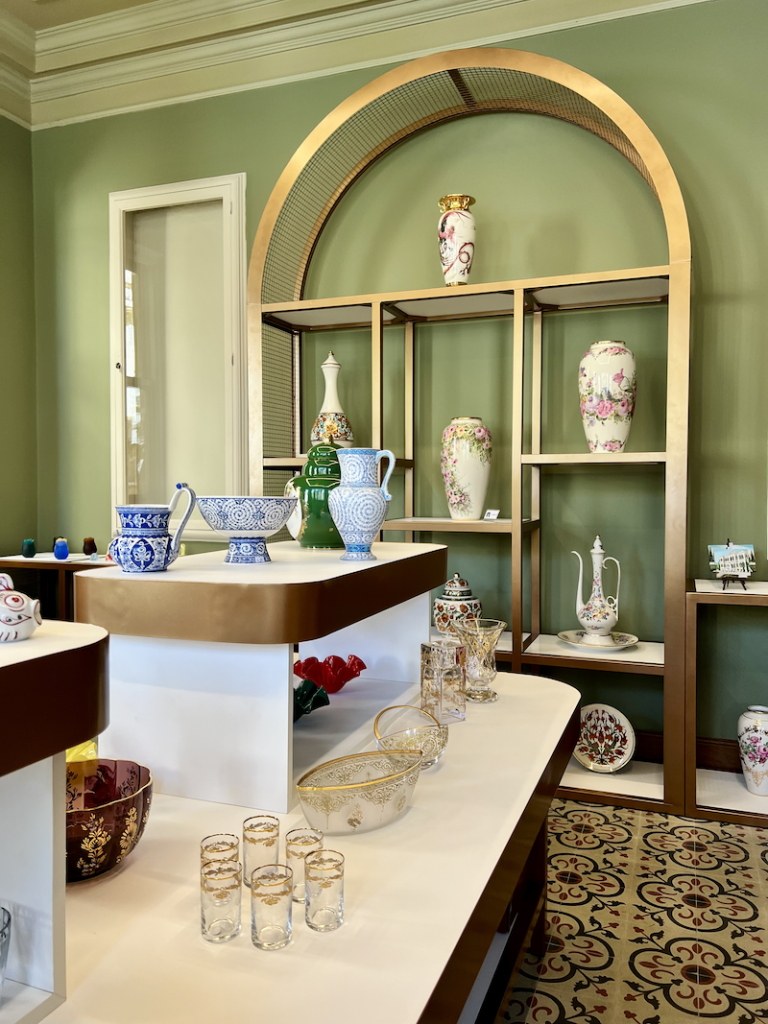
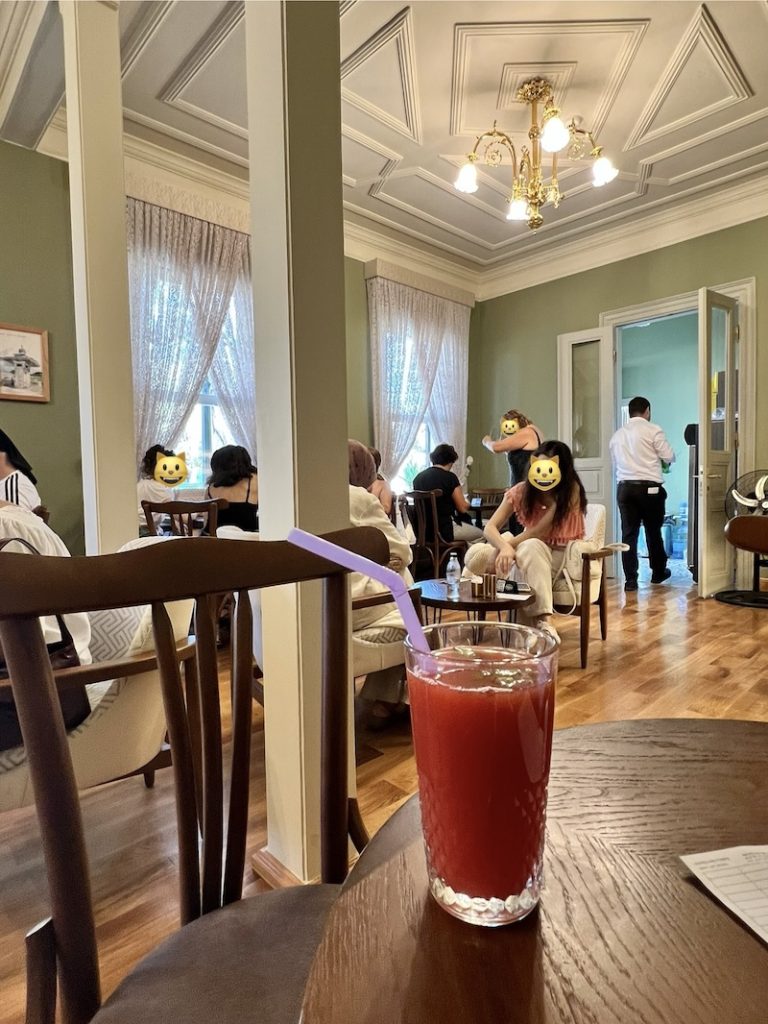
Yildiz Palace Travel Tips & Visitor Amenities
When visiting one of the most historical places in Istanbul, it helps to know a few key travel tips:
👑 When visiting Yildiz Palace, we recommend moving in a clockwise direction. Begin in the administrative section (Selamlık), continue west into the private quarters (harem), and then stroll through the outer gardens before exiting through the eastern side.
👑 To help you plan your route, we recommend finding the official visitor route map near the entrance of the palace (or ask an employee for a free brochure with map). The route map is well-designed and a great visual: just follow the numbers in order throughout the palace.
👑 Exploring Yıldız can take a couple of hours, so be sure to give yourself a break at one of the two on-site cafes:
Café D’Aronco – This cafe is located near the main square and has a lovely Art Deco interior. Their selection includes coffee, cold drinks, and light snacks. Interestingly, the cafe is named after Raimondo D’Aronco, the main architect to sultan Abdülhamid II, who built many of the buildings you see in Yildiz Palace (including the Chalet Pavilion!)
Kaskat Kafe – A casual café located near the west wing (near the harem), perfect for a quick sandwich or dessert. It has shaded outdoor seating and a nice view of the garden. * For some reason this place is called “Yildiz Sarayi Cafe” on Google Maps.
👑 Besides the main palace, Yildiz is also home to several small museums. These include the Photography Museum (a collection of 19th century photographs), the Furniture Museum (showcasing Abdülhamid II’s studio and furniture he created), and the Sultan Abdülhamid II Museum inside Çit Pavilion (that talks about his life).
👑 There are two public restroom areas within the palace grounds. One is located near the harem area (across from Kaskat Cafe) and the other near the main square. Both are well-maintained and easy to find.
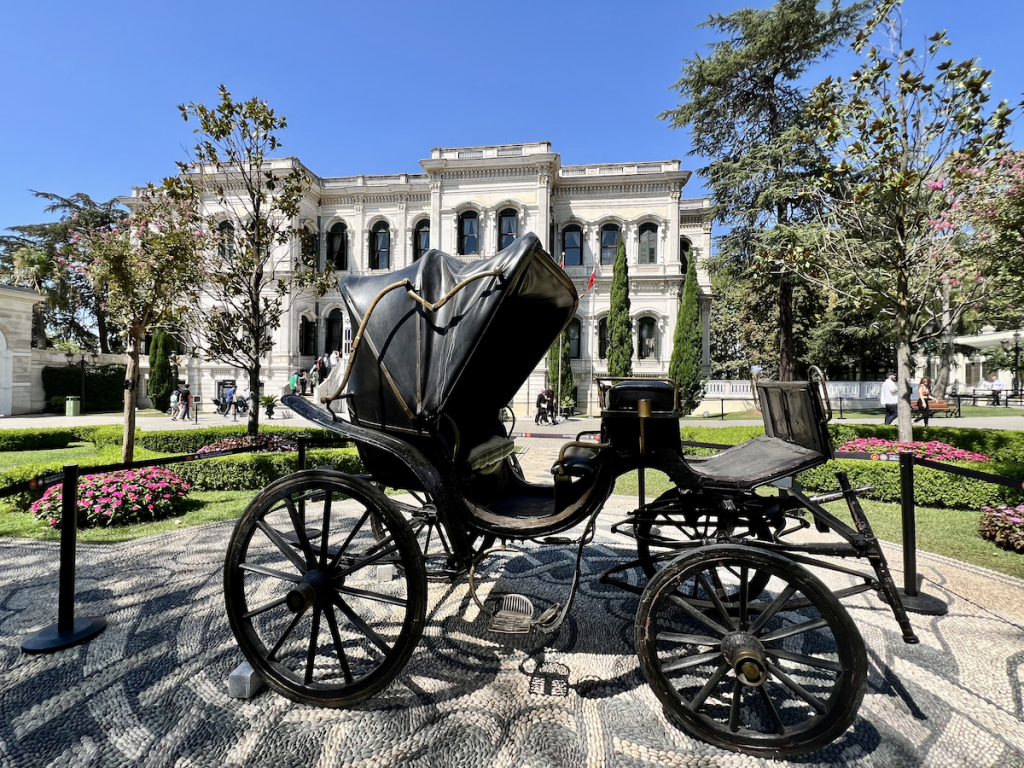
How to Get to Yildiz Palace
From Sultanahmet (Istanbul Old Town)
The easiest way to get from Sultanahmet to Yildiz Palace is to take the T1 tram from either Sultanahmet, Gülhane, or Sirkeci (depending on which is closest to you) to Kabataş.
From there, take any 29, 41, 43, or 62 bus heading toward Beşiktaş/Yıldız and get off at the Yıldız Technical University stop. The palace entrance is a short walk from the bus stop — just follow the signs uphill to Yıldız Park.
From Galata or Beyoğlu
Walk or take the Tünel funicular down to Karaköy, then transfer to the T1 tram toward Kabataş. From Kabataş, follow the same steps as above — catch a bus toward Beşiktaş/Yıldız and hop off near the university.
From Taksim Square
Wondering how to get to Yildiz Palace from Taksim? You can take Bus 559C near Taksim Square toward Beşiktaş/Yıldız, get off at the Yıldız Technical University stop, and follow the steps above. However, it’s easier to take a taxi from Taksim Square to Yildiz Palace, as it’s only a 15-minute drive.
From the Asian Side (Kadıköy or Üsküdar)
From Üsküdar, take the ferry to Beşiktaş, then hop on any bus headed toward Yıldız (or walk uphill — it’s about 15–20 minutes on foot).
From Kadıköy, take the ferry to Kabataş, then follow the tram/bus route via Kabataş and Beşiktaş as mentioned above. You can also take the ferry to Beşiktaş and then hop on any bus headed toward Yıldız (or walk uphill).

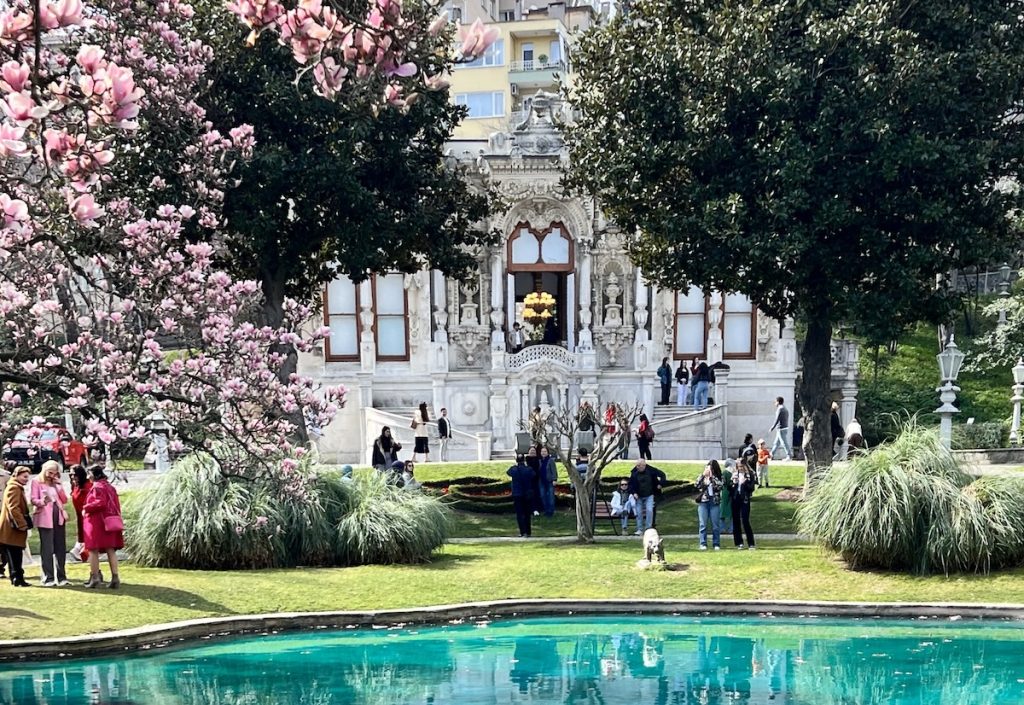
Where to go After Yildiz Palace
Once you’re done marveling at Yildiz Palace’s grandeur, why not stay a while and explore the area? There are plenty of places to go after Yildiz Palace — let’s take a look:
📍 Yıldız Park (right next door!): You don’t have to go far to see one of Istanbul’s prettiest parks. Once the sultan’s private garden, today it’s a peaceful green space filled with walking paths, Ottoman pavilions, and flower-filled terraces. Great for a break in nature — or a budget-friendly café stop at Malta or Çadır Köşkü. Bring a book or just enjoy the lush nature.
📍 Dolmabahçe Palace (25-minute walk downhill): Why not visit two palaces in one day? 😉 Dolmabahçe was the empire’s main palace before Yıldız, and there are noticeable differences. Visiting both gives you the chance to see just how much the empire changed between the two palaces. Be sure to check out our Dolmabahçe Palace Travel Guide here for all the information →
📍 Ihlamur Palace (18-minute walk or 5-minute taxi): Okay fine, how about three Ottoman palaces in one day?! 😁 (Kidding, kidding). This lesser-known Ottoman residence is surrounded by linden trees (that’s what ıhlamur means!) and was a favorite escape of Sultan Abdülmecid I. It’s especially beautiful in the spring when the magnolias bloom.
📍Beşiktaş Waterfront (17 minute walk downhill): This is the perfect spot for a breezy stroll along the Bosphorus. Grab a simit, watch the ferries come and go, or pop into one of the many waterfront cafés. From Beşiktaş pier, you can also catch a ferry to Kadıköy or Üsküdar — ideal if you’re heading back to the Asian Side.
📍Beşiktaş (15 minute walk downhill): If you’re hungry, may we suggest a walk around Beşiktaş center? This area is brimming with delicious restaurants, cafes, döner haunts, international cuisine, you name it… And since it’s a popular hangout for Istanbul’s university crowd, prices tend to be lower, the atmosphere is more local, and the streets have a youthful energy.
📍 Çırağan Palace Kempinski (10 min walk via Yıldız Park exit): Even if you’re not staying at this five-star hotel, it’s worth peeking at the historic façade from the outside. If you feel like treating yourself, stop in for afternoon tea on the terrace. (And, of course, if you’d like to stay here, we humbly present the hotel’s Booking.com page for your perusal :))
Read More
Looking for even more palaces to visit in Istanbul? Check out our guide to Topkapi Palace here or our guide to Dolmabahce Palace here!
Yildiz Palace FAQs
Is Yildiz Palace worth visiting in Istanbul?
Yes, absolutely — especially if you’ve already seen Topkapı and Dolmabahçe and want something more off the beaten path in Istanbul! It offers an interesting view into the final years of the Ottoman Empire and is a nice place to spend a few hours.
What is Yıldız Palace famous for?
Yıldız Palace is best known as the last administrative center of the Ottoman Empire and the residence of Sultan Abdülhamid II. It’s also famous for its sprawling complex, gardens, and unique blend of imperial buildings (including a porcelain factory and even a palace theater!)
Where is Yıldız Palace located?
Yıldız Palace is located in the Beşiktaş district of Istanbul, on a hilltop overlooking the Bosphorus.
Can I visit Yildiz Palace without a tour?
Yes, you can explore Yıldız Palace on your own, thanks to the clearly marked visitor route. However, if you’re curious about the history, architecture, or Sultan Abdülhamid II’s personal quirks (like his carpentry obsession), a guided tour definitely adds depth to the experience.
Is Yildiz Palace stroller- or wheelchair-accessible?
Partially. The outer gardens and main entrance area are relatively flat and stroller-friendly, but once you’re inside the palace complex, it gets trickier. There are stairs, cobblestones, and uneven surfaces that may be difficult for wheelchairs and prams. However, you can park your stroller outside the building and come back to it after you finish visiting the building.
Are there bathrooms and cafes in Yildiz Palace?
Yes — there are two bathroom areas along the visitor route. There are also two small cafes: Cafe D’Aronco and Kaskat Kafe, perfect for grabbing tea or a quick snack. If you’re looking for a proper meal, we recommend heading to Beşiktaş afterward for more options.
Can I bring a bag or backpack inside Yildiz Palace?
You can bring a small bag.
Is photography allowed inside Yildiz Palace?
Sadly, no — photography is not allowed inside the palace buildings, and security guards are quite strict about it. That said, you’re welcome to take as many pictures as you like outside, especially in the gardens, near the pool, and by the pavilions.
Can I buy tickets to Yildiz Palace on the same day?
Yes, you can buy tickets at the entrance, but keep in mind that lines can be very long, especially in summer and on weekends. If you’re short on time, we highly recommend buying your ticket online in advance with skip-the-line access. Click here to book it online →
How long should I plan to spend at Yildiz Palace?
Most people spend about 2 to 3 hours touring the main palace buildings, plus time for a stroll through the gardens or a café break. If you’re planning to visit the nearby Yildiz Park, budget for a bit of extra time.
Book Your Yildiz Palace Tickets
Yıldız Palace might just be one of Turkey’s best-kept secrets. Don’t miss the chance to explore one of Istanbul’s most underrated royal gems, complete with sprawling gardens, imperial pavilions, and, of course, beautiful architecture.
🎟️ Skip the lines and book your Yıldız Palace ticket online here →
You can also check ticket availability and book via the widget below 🙂
Photo credits: Old Yildiz Palace via yedikita | Malta kosk via Dosseman | Yildiz Park via Chapultepec
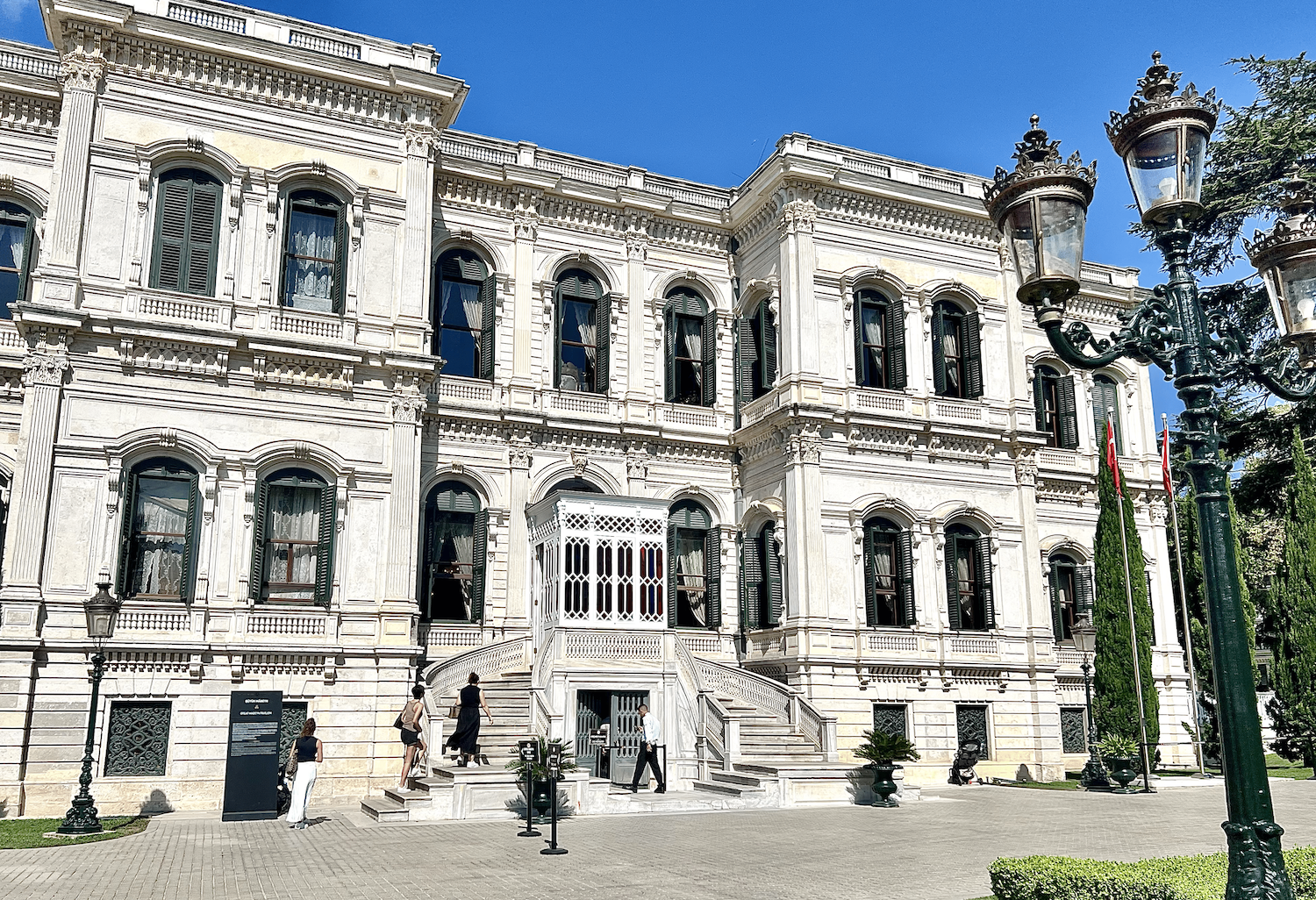
Leave a Reply